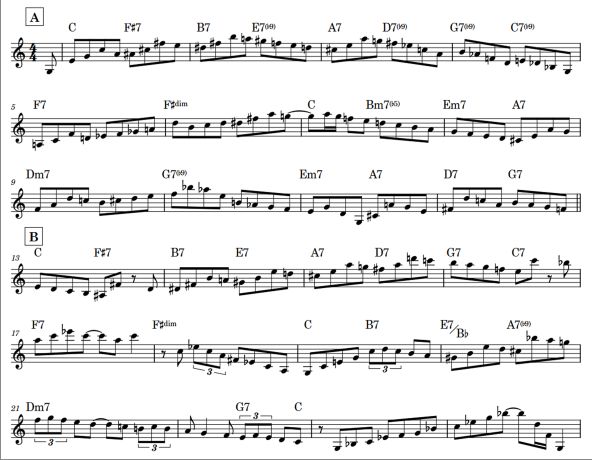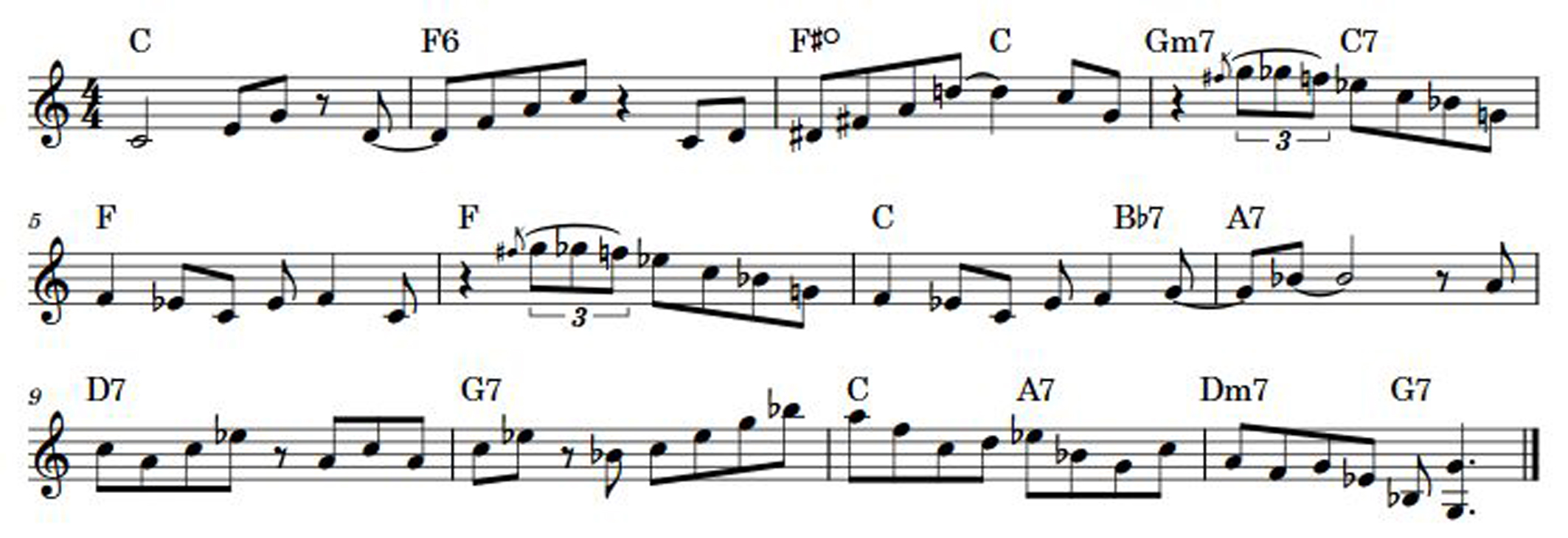Professor's Note Take Off Blues 2
Melody & Improvisation
- Svend Asmussen at a concert announced that with Take Off Blues he fullfilled an old dream of using the full Circle of Fifth's in a Blues.
- In a filmed interview he talked about the disease, many jazzmusicians suffer from: Even under conversation about serious matters there are running chords, improvisations, fingering, music-theory-problems in the back of the head. As Toots Thielemans said: "I'm thinking on it all the time."
- Take Off Blues is a construction, an experiment. But not at all dusty. The Blues differ from other Asmussen-arrangements that all melodic material is played in unison - without chords or parallel thirds.
- The Introduction: Part A and B represent the long "circle". It starts slowly and accellerates before TakeOff. The bass plays the chord-roots and the melody outlines the chord in floral vines. Remark that the four-note figures play either the 7-chords - or a diminished chord representing the upper notes in a 7(b9)-chord.
- Bars 21-22 the 3-quarter-note long phrases (starting with triplets) brings the ornamentations to a sudden stop, and an unison blues-scale opens up for the unison main-theme.
Click on picture for bigger view. - or listen to an mp3 with chords

Main part of the melody only uses the pentatonic Blues-scale C-Eb-F-G-Bb
Bars 9-10 presents the same notes as bar 17 in the Intro. And the F7 feeling goes on in bar 11.
 -
-